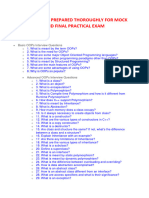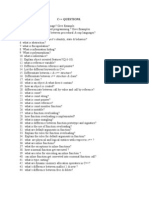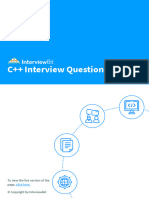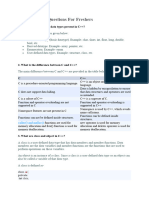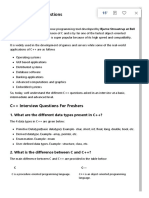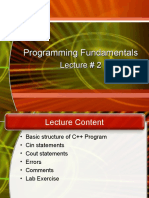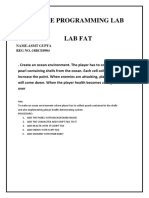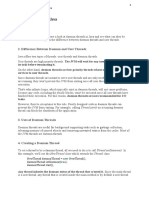0% found this document useful (0 votes)
19 views4 pagesAdvanced OOPs CPP Interview Guide
The document provides a comprehensive overview of Object-Oriented Programming (OOP) concepts in C++, including definitions and explanations of key principles such as classes, objects, encapsulation, abstraction, inheritance, polymorphism, and constructors. It also covers advanced topics like friend functions, virtual destructors, and the diamond problem in multiple inheritance. The content is structured as a guide for interview preparation, detailing essential concepts and their implementations in C++.
Uploaded by
Likhitha GangisettyCopyright
© © All Rights Reserved
We take content rights seriously. If you suspect this is your content, claim it here.
Available Formats
Download as PDF, TXT or read online on Scribd
0% found this document useful (0 votes)
19 views4 pagesAdvanced OOPs CPP Interview Guide
The document provides a comprehensive overview of Object-Oriented Programming (OOP) concepts in C++, including definitions and explanations of key principles such as classes, objects, encapsulation, abstraction, inheritance, polymorphism, and constructors. It also covers advanced topics like friend functions, virtual destructors, and the diamond problem in multiple inheritance. The content is structured as a guide for interview preparation, detailing essential concepts and their implementations in C++.
Uploaded by
Likhitha GangisettyCopyright
© © All Rights Reserved
We take content rights seriously. If you suspect this is your content, claim it here.
Available Formats
Download as PDF, TXT or read online on Scribd
/ 4













